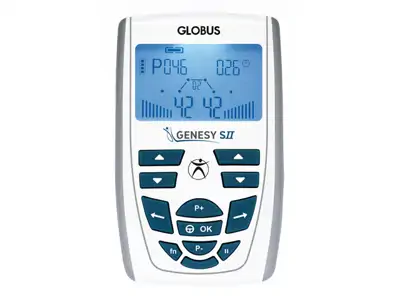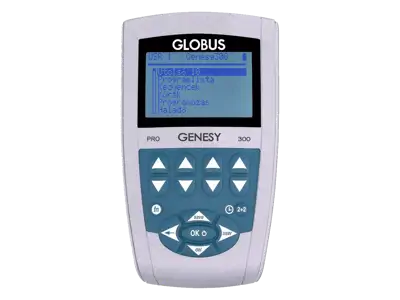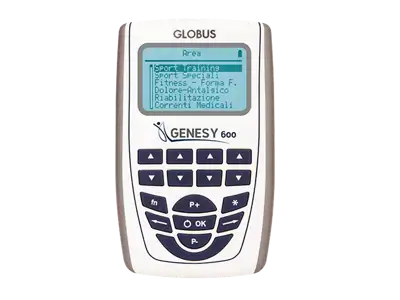Ionophoresis
Have you ever wondered what happens when you take a medicine? How much of the substances in the pill or capsule are left "intact" by your digestion? How much of it is absorbed in your intestinal lining and gets into your bloodstream? And finally, how much gets to where it is needed? In some cases (sports injuries, arthritis, etc.), treatment is most effective when the medicine is administered locally, directly to the site of the problem. Iontophoresis is such a method. It bypasses digestion and "delivers" the drug quickly and directly to where it is needed.
Iontophoresis
Direct current is used to deliver the dissolved drug through the skin into your body, using the movement of ions in solution by an electric current - hence the term "ion migration" or "iontophoresis".
Drugs in solution split into positively and negatively charged ions, or electrically charged particles. The positively charged ones are called cations, the negatively charged ones anions.
Iontophoresis is based on the fact that, under the influence of a direct current, these ions start to migrate towards the opposite pole to their own charge: the positively charged ion moves towards the negative electrode, the negative towards the positive electrode.
Effects of iontophoresis
Iontophoresis treatment has both local and general effects: the active substance accumulates at the site of injection, forming a depot, which gives a concentrated and long-lasting effect; in addition, the drug administered locally is absorbed into the capillaries of the skin and from there into the bloodstream. In addition to its strong local action, it also has a weaker overall effect.
The benefits of the treatment include:
- it avoids the need for oral administration of drugs, so that instead of some of the drug being broken down in the digestive tract, all of it is used where it is needed, i.e.
- it can target the painful area;
- in addition, the contractions induced by the direct current also increase blood circulation, which speeds up the healing process.
Since iontophoresis can be used to relieve pain, reduce inflammation, vasodilatation, relieve muscle spasm (muscle spasm, stiffness) and soften tissue, it is recommended for the treatment of...
- sports injuries and
- joint pain,
- as well as to enhance the effects of cosmetic products.
Procedure for iontophoresis treatment
Wet the electrodes before starting the treatment. The drug to be used may be of positive, negative or dual polarity; the drug of positive polarity should be "poured" on the electrode connected to the positive pole and the drug of negative polarity on the electrode connected to the negative pole. (Dual polarity drug can be dispensed on either electrode pole.) Then place the drug-soaked electrodes over the painful area and the other electrode on the opposite side of the area (e.g. right and left knee).
Positive electrode drugs include lidocaine, procaine, calcium chloratum, histamine, tolazoline and vitamin B1; and the group of negative electrode drugs includes sodium salicyclatum, potassium iodatum, phenylbutazone ointment, Voltaren emulsifying gel, diclofenac gel, Flector gel and Fastum gel (among others).
As with any drug treatment, it is vital to consider possible drug allergies when considering iontophoresis. Once you are satisfied that you will not have an allergic reaction to the medicine you are using, you can start treatment.
The amount of medicine injected during treatment depends on a number of factors. These are:
- the duration of the current action - which can be controlled during treatment,
- the strength of the current - which depends on your tolerance,
- the surface area of the electrode and
- the speed of movement of the ions - which is determined by the molecular weight of the substance.
During treatment, you need to set the iontophoresis device to an intensity level that gives a "tingling" sensation to the area being treated. Too high a current intensity can be painful, while too low can be ineffective.
As mentioned above, a current will cause the agent to migrate from one pole to the other through the painful area while releasing the active ingredients.
Iontophoresis is performed daily, with a course of 10 to 15 (20 in severe cases) treatments usually required. Start treatments with a low frequency iontophoresis program. Although lower frequencies have lower drug penetration, they have milder skin redness than higher frequencies.
Reddening of the skin is a natural phenomenon as iontophoresis (current) causes blood to be drawn. The redness usually disappears a few minutes after the treatment is finished; do not scratch the reddened area! If the redness persists for a longer period of time, consult your doctor, as this may be an allergic reaction to the drug.)
Various routes of administration
- Unipolar treatment involves injecting the drug solution from one pole only. It is important to know from which pole a particular solution can be taken; if you take it from the wrong pole, the drug will stay in place and will not migrate, making the treatment ineffective.
- Bipolar treatment allows you to take a solution from both poles (positive and negative) at the same time.
- Descending treatment is when you place the active pole above the diseased area and the other pole below (in this case the current direction is descending).
- Transverse current direction is most commonly used for joint treatment or bipolar treatment.



